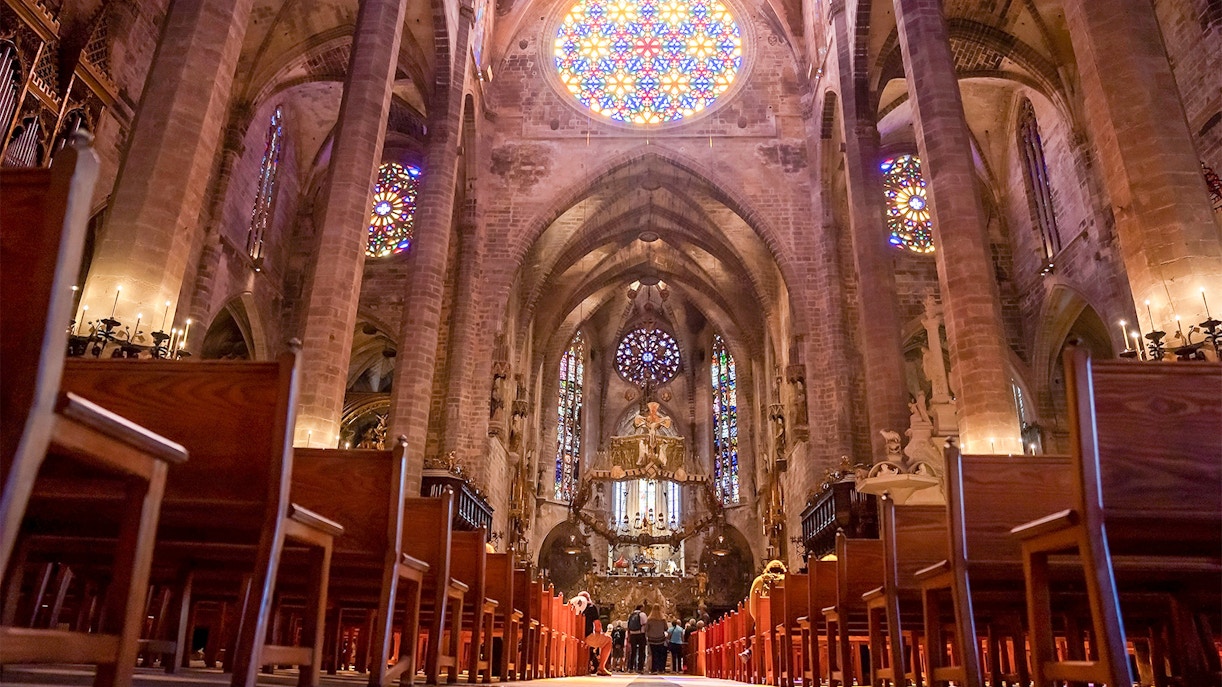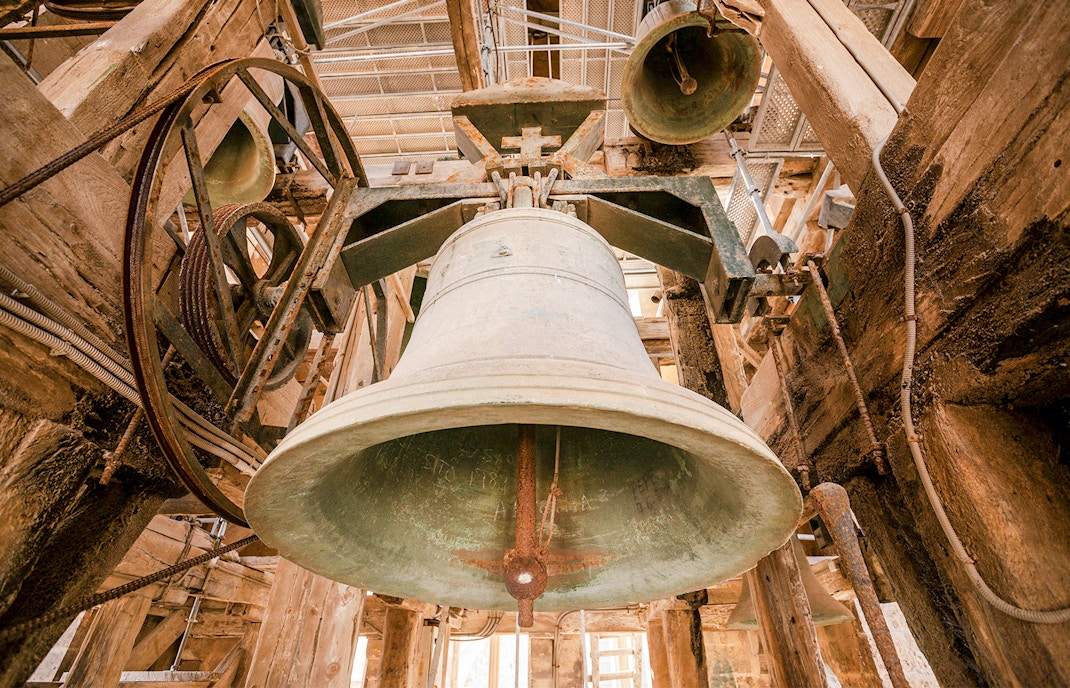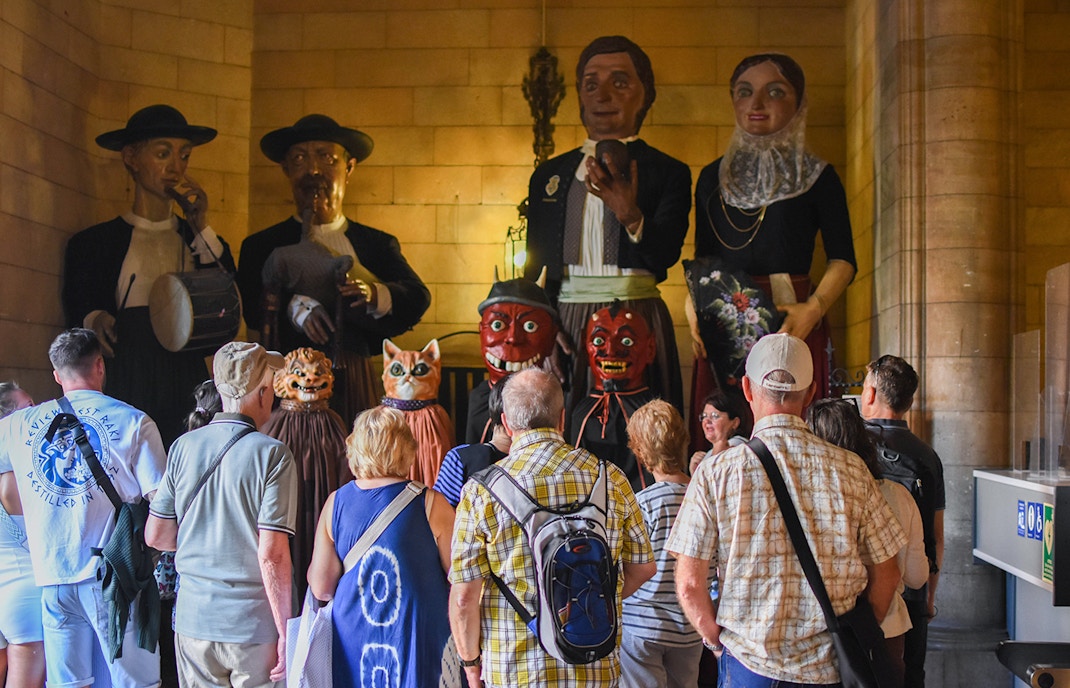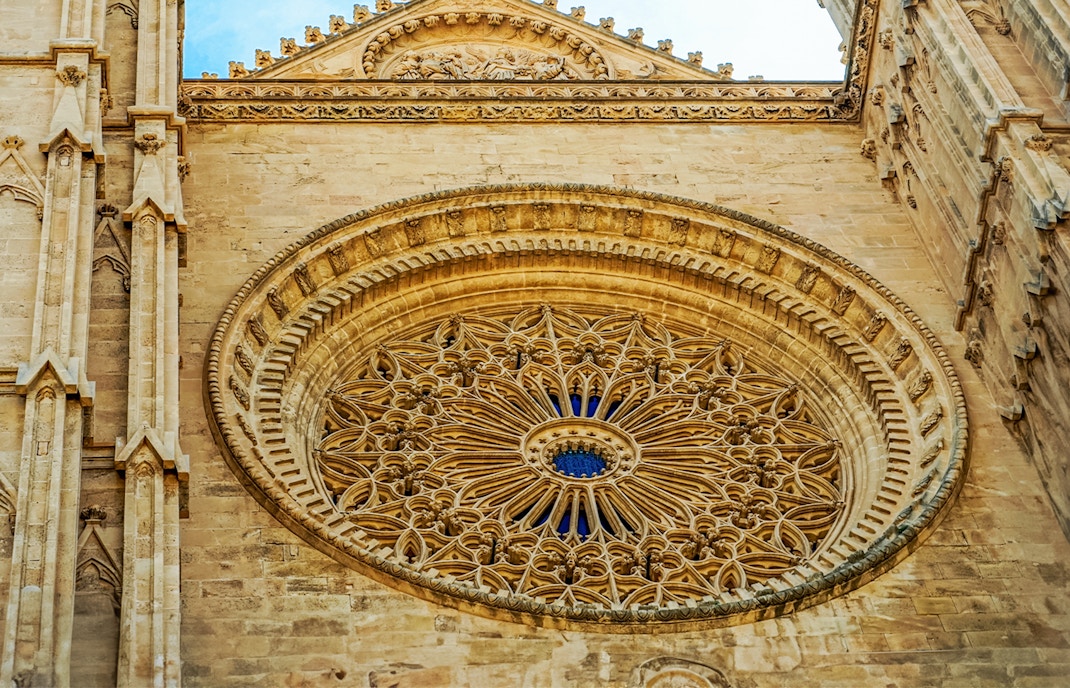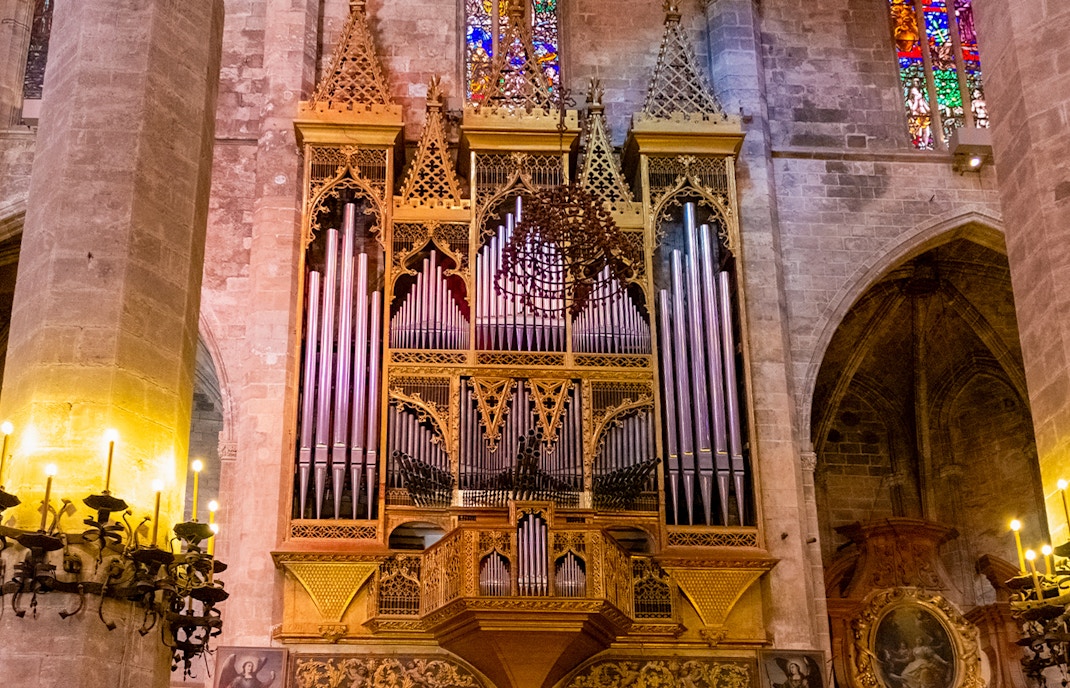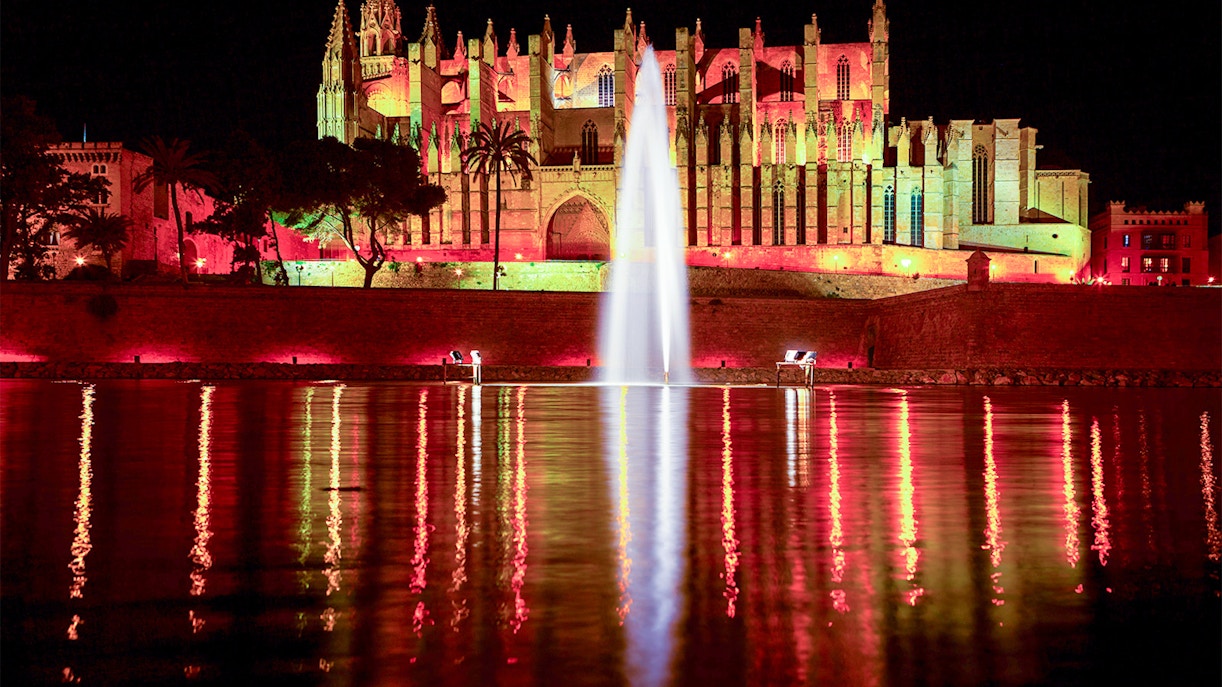- Gaudi’s magic: Antoni Gaudí has had a transformative impact on the Palma Cathedral with his whimsical touches. The crown-of-thorns canopy over the altar is one of the most beautiful parts of the cathedral, second only to the famous rose window.
- Spectacular stained glass: Do you want to know why it's called the ‘Cathedral of Light?. Now you can! The Palma Cathedral has over 61 stained-glass windows. You can also see the amazing central rose window that floods the cathedral with light and color!
- Terrace tour: Choose a ticket with terrace access and take a tour of the cathedral’s rooftops for amazing views of Palma. You can see Palma's beautiful skyline, Parc de la Mar, and the Mediterranean Sea from the cathedral’s rooftops.
- Magical light show: Don’t miss the twice-yearly Festival of Light held on November 11 and February 2. It’s called the Festival of Light because the rose window creates a figure of 8 with its colorful reflections—a truly magical experience!
Why visit the Palma Cathedral?
